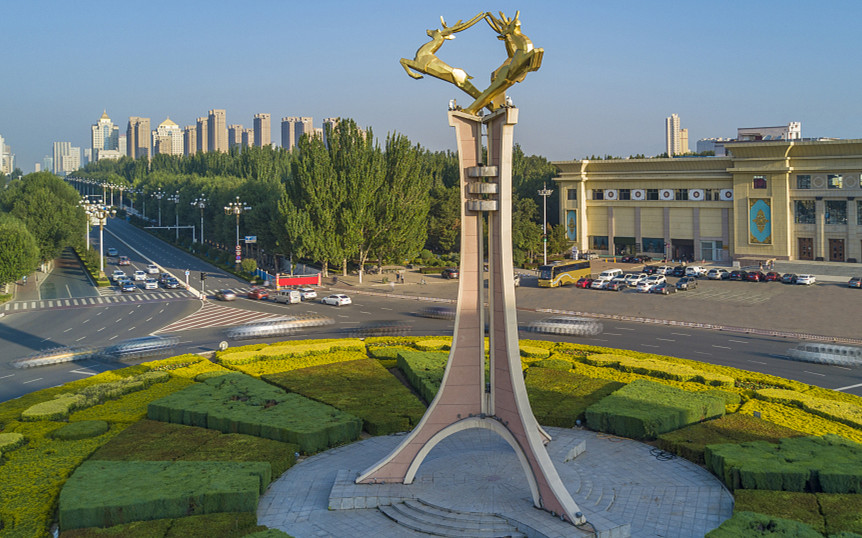A focus on compassion
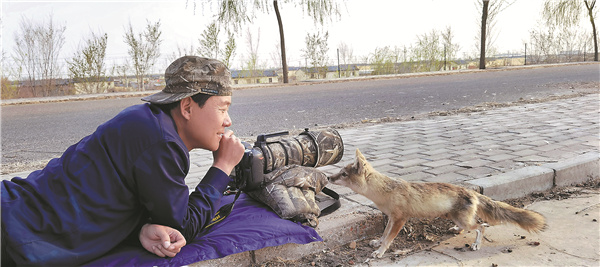
Amateur photographer Guo Liming meets a fox in a wetland park in Baotou. [Photo provided to China Daily]
An amateur photographer looks to help birds and animals in a wetland park.
Amateur photographer Guo Liming was surprised to find a vulture being "bullied" by some magpies on Yinshan Mountain in Baotou city, Inner Mongolia autonomous region, when he was looking to take photos of birds in the winter of 2021.
He saw the magpies clutch the vulture's feathers, pull its tail, and even try to stand on its shoulders, while the large bird just lowered its head without any resistance. He wondered why it was being subjected to such indignity and guessed it might have eaten something poisonous or be too hungry to fight back.
Although he was afraid, Guo approached the vulture and covered its head with a hat, carefully moved it to his car and called the local forest rangers.
"I was afraid, as its claws and beak seemed a bit threatening, but it behaved obediently. After moving it to the car, I took the hat off its head, but it didn't try to attack me at all. Maybe it was aware I was offering help. Animals are really intelligent," recalls Guo.
It is one of Guo's many up-close interactions with birds since he started to take photos of them in 2007. The freelance photographer, who lives in Baotou, has spent years recording birds and wild animals, and witnessed changes in the area's ecology.
Born in Hohhot city, Inner Mongolia, in 1972, Guo, who had an interest in photography since childhood, got his first camera when he was in senior high school in 1989. After resigning from the local railways bureau in 2000, he started his own business and began to take photos more often during his free time.
A short drive from his home is a national-level wetland park, which covers about 12,000 hectares. Inside the park there are numerous birds and some wild animals. As a result, in 2007, when he could afford to buy telephoto lens, which can better capture animals at a distance, he began his journey as a wildlife photographer.
Over the years, he has taken photos of more than 300 types of birds, mainly in Baotou and a section of the Qinling Mountain in Hanzhong city, Shaanxi province. His works, including photos and videos, are on his WeChat account and have been made public, as well as used by local authorities.
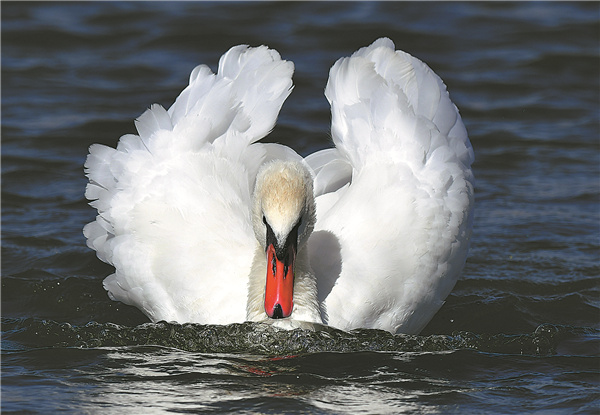
Guo has spent 15 years taking photos of birds and wild animals: a mute swan, whooper swans and a magpie nibbling the feather of a vulture. [Photo provided to China Daily]
The most important thing while filming birds is to identify the ideal distance between himself and his subjects.
"In our circle of photographers who focus on birds, we advocate a policy to not interfere with their lives while taking pictures. We need to find a suitable distance so that we can take clear pictures while not making them feel threatened.
"Birds have different feelings about such distances. For example, you must photograph great bustards from a distance of at least 200 meters, or they will fly away. But some other birds don't care that much, and may jump around your feet even. The biggest challenge is to figure out the best distance for each type," he says.
At the end of the day, however, it's also a matter of chance. Sometimes, he says, he might attempt to get pictures of one bird many times, but still won't get a satisfying photo.
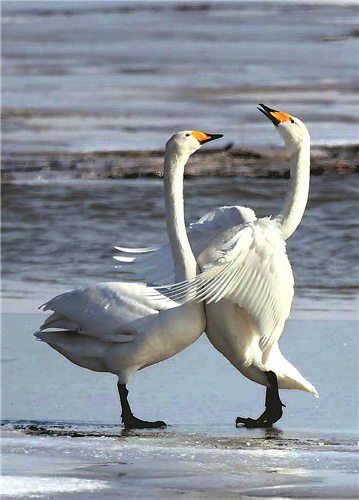
Guo has spent 15 years taking photos of birds and wild animals: a mute swan, whooper swans and a magpie nibbling the feather of a vulture. [Photo provided to China Daily]
"They are animals living in the wild. Of course there are times when I cannot take some photos, but the process is interesting."
His family members support him, he says, and sometimes his wife accompanies him and offers suggestions for his photography.
Li Yongqiang, another amateur photographer in Baotou, says: "He has great love for wild animals and birds, and often likes to help them. It's quite strange that he seems to be able to communicate with the animals, and they seem to trust him."
"It's beneficial to my health. In nature, away from pollution and a daily routine, I feel relaxed. Sometimes when I cannot find any birds to take photos of, I just stay there for a whole day. I still feel good," says Guo.
He used to see nets that people spread to catch birds, and would dismantle them or report them to police. But with better forest management, the situation has improved.
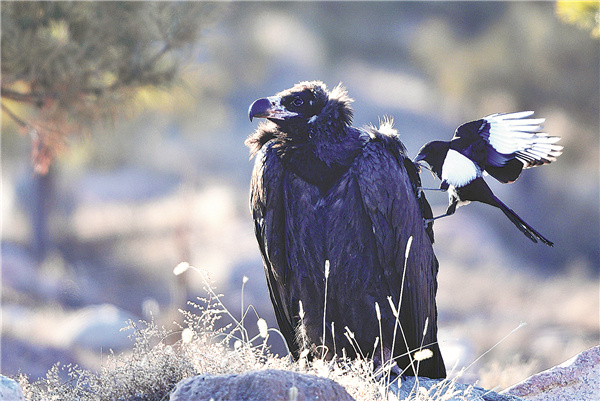
Guo has spent 15 years taking photos of birds and wild animals: a mute swan, whooper swans and a magpie nibbling the feather of a vulture. [Photo provided to China Daily]
He says the government has taken steps like treating sewage and dispatching volunteers to offer food to wild swans in early spring when they have difficulty finding food, because of lingering ice. As a result of these efforts, he has seen more types of birds in recent years. Last year, he even spotted a barnacle goose, a bird that had not been recorded visiting the area before.
Inside the wetland park, Guo sees litters of new-born foxes every year. In late spring, he starts to take photos but says he finds that most of the foxes don't get to grow up, as they are often killed by cars.
"Sometimes I see the body of a fox, which I have seen and recorded growing. It makes me really sad."
According to his observations, foxes often run cross the road at night. When a fast car approaches, it's lights fall on the animal, and the fox becomes too scared to move. As a result, it gets knocked down. Therefore, Guo advocates slow and careful driving in the park.


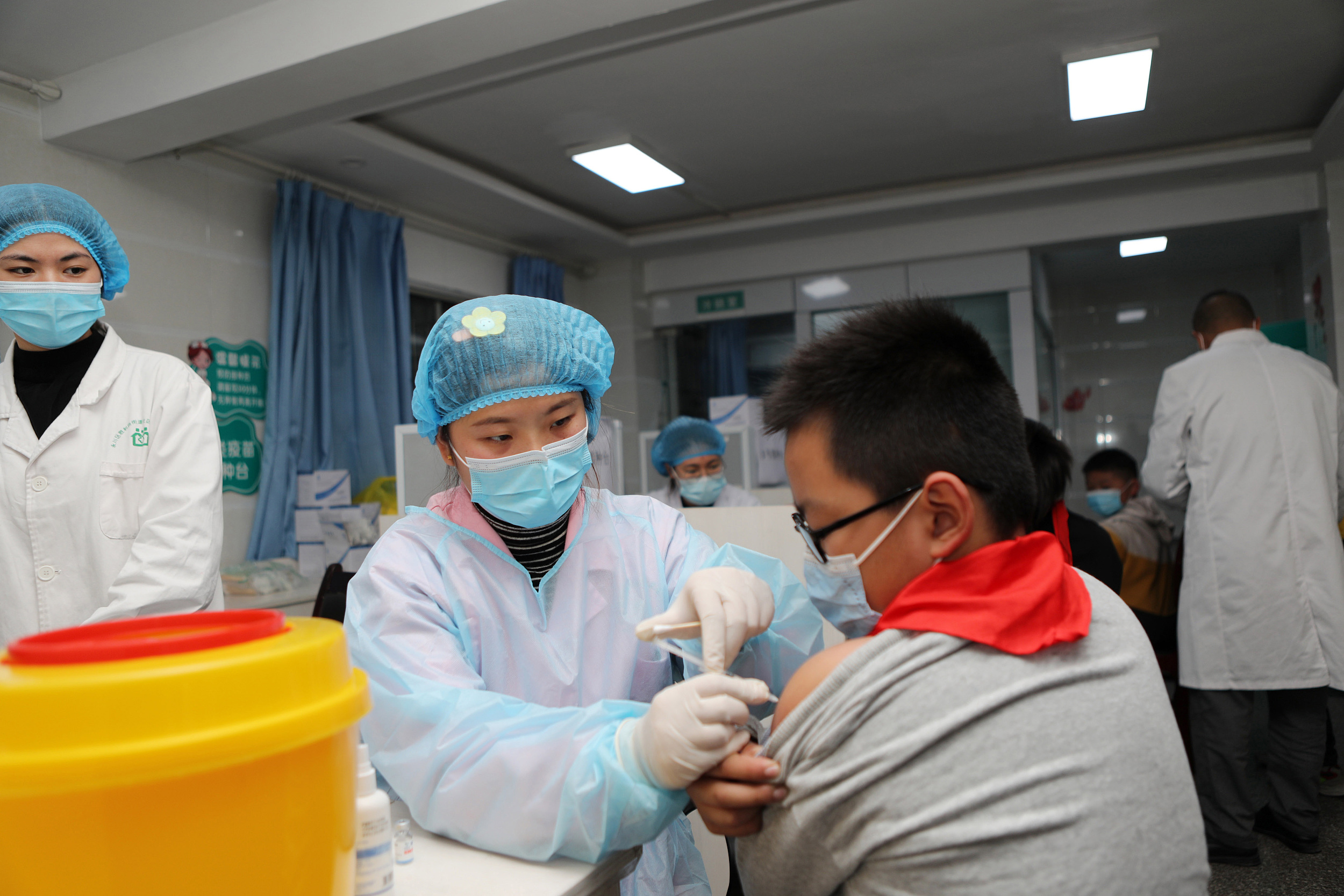
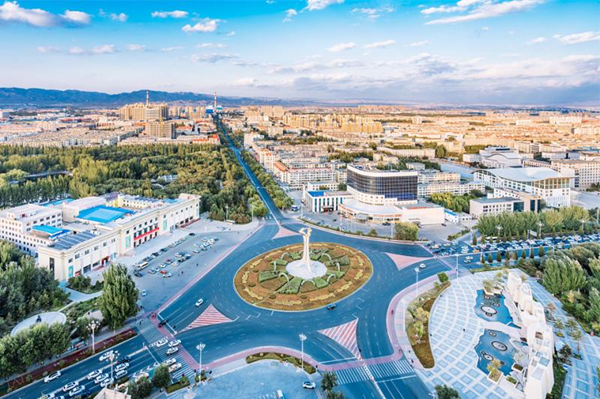
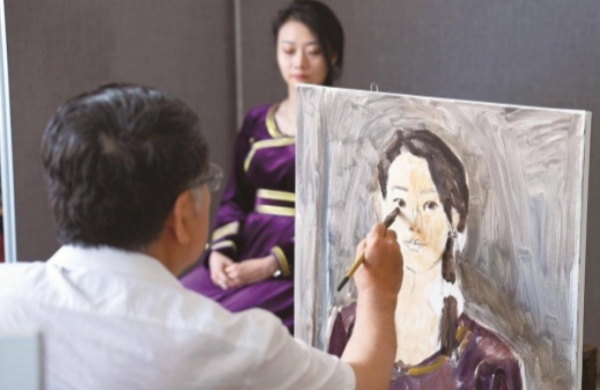
 Sketching and creation tour in Baotou
Sketching and creation tour in Baotou